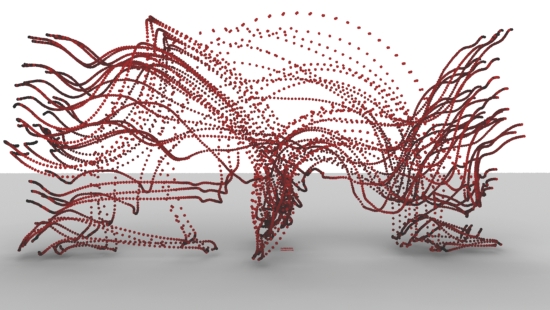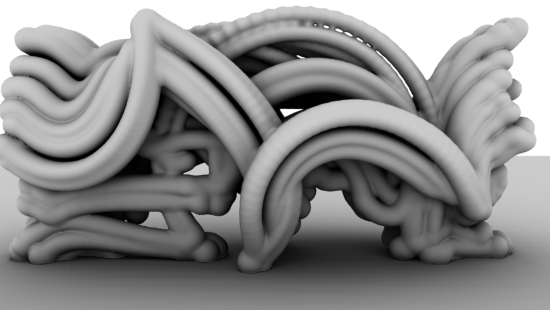
Figure 1
343 fields (frames) - one RiPoint per mocap marker.

Figure 2
41 RiCurves - one curve per marker each with 343 cvs.

Figure 3
One RiBlobby - one blob per marker per frame (14063 blobs).
Python & RfM
|
Introduction
The tutorial, Python: Parsing MoCap Data,
presented two python classes ( |
|
|
|
When used with an approriate interface with Maya the primitives generated by
|
|
|
MoCapRMan, Maya & RfMThe easiest way to use mocap python scripts with Maya is to create an artist-friendly user interface. This section of the tutorial demonstrates how an interface for use by Pixar's RenderMan for Maya (RfM) can be added to Maya - figure 6.
Unzip mocap.zip and save the following three scripts in these directories, maya/projects/RfM_python/
|_ mocap_rman.py
maya/scripts/
|_ mocap_db.py
|_ maya_proj_utils.py
The interface for Maya is implemented by following three scripts. They should be saved in the RfM_mel directory. For example, maya/projects/RfM_mel/
|_ mocap.rman
|_ mocapUI.mel
|_ mocapRI.mel
Information about customizing RfM and Maya can be found in the tutorial, "RfM: Customizing". |
Maya WorkflowGenerate Rib Archives
1. Create a proxy object, for example, a poly cube. Render the Rib Archives
1. Hide the proxy object.
4. Change the numeric extension, say,
6. Finally, render and image and check if the baked geometry is correct. |
© 2002- Malcolm Kesson. All rights reserved.